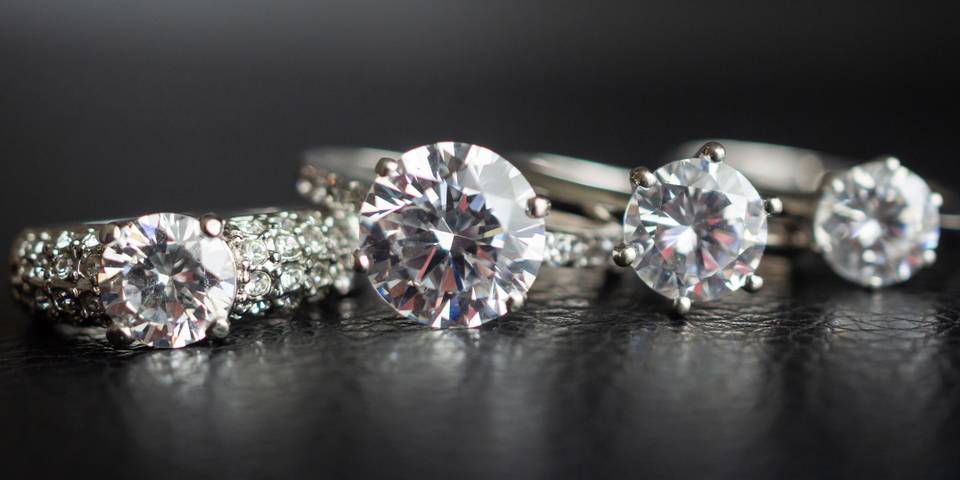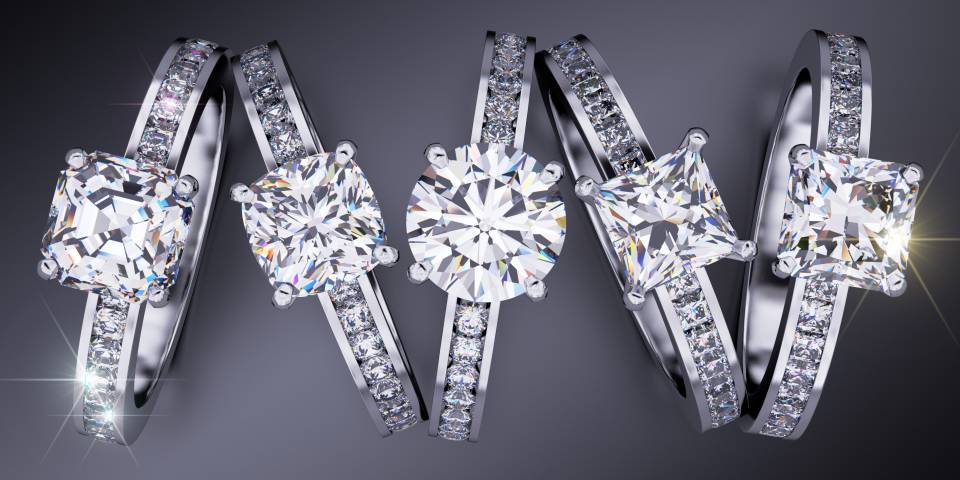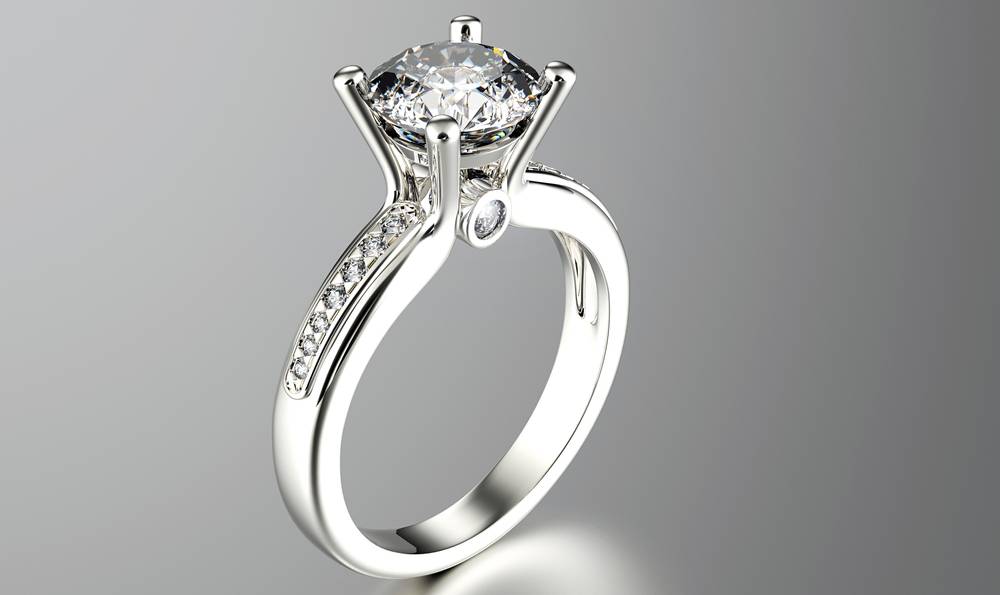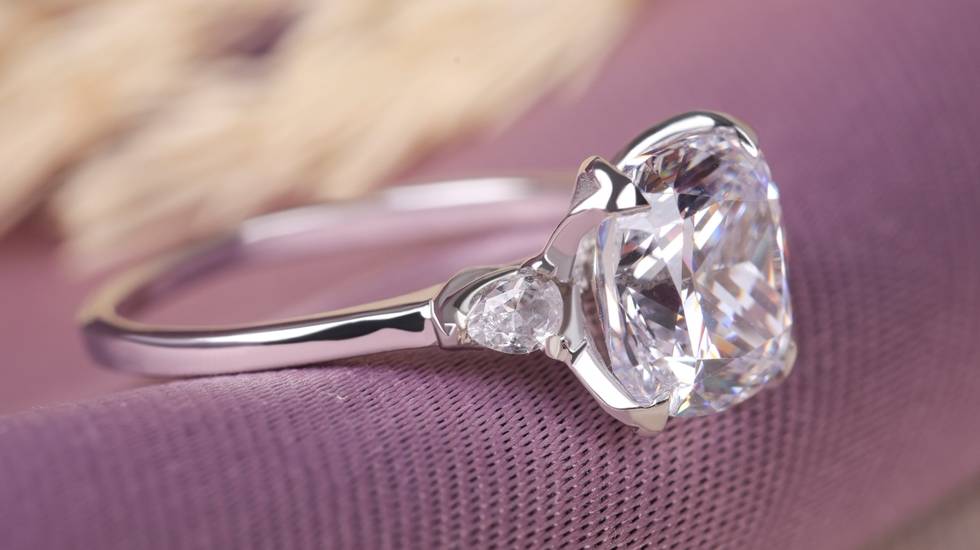You’ve probably noticed a diamond ring where the gem appears to be magically floating above the metal. This captivating illusion is achieved through the use of prongs that secure the diamond in place.
Prongs serve a dual purpose: they hold the gem securely on the ring and create an elevated setting that allows light to enter the stone from various angles, resulting in the mesmerizing sparkle and brilliance diamonds are known for.
Considering that prongs play a crucial role both functionally and aesthetically, it becomes evident that selecting the right prong setting is essential for creating the ring of your dreams.
Before embarking on your quest to find the perfect ring, take the time to familiarize yourself with prong settings and gain a comprehensive understanding of everything you need to know about them through our comprehensive guide.
Let’s delve into the world of prong settings and explore the possibilities together!
DESIGN YOUR OWN ENGAGEMENT RING: START WITH A SETTING OR START WITH A DIAMOND. IT’S REALLY UP TO YOU!

What Are Prongs?
Let’s start with the fundamentals. Prongs are tiny metal pieces attached to a ring, resembling a cradle, designed to securely hold a gemstone in place.
You may also come across the term “claw settings” since prongs bear resemblance to small metal claws.
During the ring-making process, the jeweler carefully positions the prongs on the ring before placing the gemstone. The skill of the jeweler comes into play as they bend and polish the prongs with precision.
A skilled jeweler adeptly trims any excess material, ensuring a seamless fit without any gaps between the gem and the metal. They delicately round the edges and determine the perfect height, requiring utmost dexterity and patience.
The end result should be a meticulously crafted ring where the prongs do not obstruct any part of the gem’s top surface (known as the table facet), while providing a secure grip.
In contemporary jewelry, prong settings are the most common choice. However, this wasn’t always the case. Prior to the late 19th century, gemstones were predominantly set in bezel settings, where the stones were more or less concealed within a metal casing.
The introduction of prong settings revolutionized the industry as they allowed jewelers to showcase the gemstone prominently. Moreover, prong settings enabled the use of larger and more exquisite gemstones.
The elevated position of the gemstone, coupled with the increased light refraction and minimal metal coverage, quickly made prong settings a beloved choice and a timeless classic, particularly for engagement rings.

Number Of Prongs
Now that we’ve established the superiority of prong settings, let’s delve into the number of prongs on a ring.
The number of prongs can vary, ranging from as few as 2 to as many as 8. However, experience has shown that 4 or 6 prongs are the two most optimal choices.
When deciding on the number of prongs, consider the following questions:
- How much sparkle do you want your gemstone to have?
Prongs inherently allow light to freely pass through, unlike other types of settings. While the diamond’s cut primarily influences its brilliance, the number of prongs also plays a role.
Fewer prongs allow more light to pass through, enhancing the gemstone’s sparkling appearance.
- How big is the gemstone?
The number of prongs should be proportionate to the gemstone’s size. For stones weighing less than one carat, it is advisable to have four prongs or fewer.
Adding more prongs to a smaller stone may overpower and detract from its beauty.
For larger stones, weighing more than one carat, it is recommended to opt for six or more prongs to ensure secure setting.
- Are you concerned with stability and protection?
Prongs provide protection against impacts and scratches. As expected, the more prongs, the greater the protection.
In the event of a broken prong, having six prongs is less problematic, as there are still five remaining to secure the stone. However, losing one prong in a three-prong setting could lead to a disaster.
- What shape do you want your gemstone to look like?
Consider whether you prefer a square or rounded appearance for your gemstone.
Traditionally, four prongs are used to accentuate the squareness of a gemstone, while six prongs lend a slightly oval shape. Take into account the cut of the gemstone, as square cuts like emerald or princess tend to complement four-prong settings.
Ultimately, the choice of shape is a matter of personal preference. Opt for the one that best suits your taste.
Remember to consider these factors when selecting the number of prongs, ensuring your ring meets both your aesthetic preferences and functional needs.

Prong Settings Variants
While personal preference plays a significant role, the choice of prong setting can greatly impact the overall appearance of a ring, necessitating careful consideration.
Prong settings come in various shapes and sizes, so choose wisely based on your taste and the overall look and shape of the gemstone.
The rounded prong is the most common type, often featured on rings. Positioned just above the gemstone’s girdle, these prongs are inconspicuous, resembling tiny circles when viewed from the top.
Clawed prongs, also known as pointed prongs, are commonly used in engagement rings. They blend in with the diamond and subtly accentuate its contours.
For added security without bulky prongs that may detract from the gemstone’s beauty, double-claw prongs are recommended.
V-shape prongs are utilized with diamond cuts like marquise or pear to mitigate the risk of chipping. These prongs offer both protection and a seamless extension of the elegant cuts’ lines.
Flat tab prongs have a lower profile compared to other types, reducing the chance of snagging on fabric. They are particularly suitable for emerald cuts, enhancing their rectangular shape.
Consider exploring custom prongs, allowing you to experiment with different shapes, sizes, and orientations in relation to the gemstone. However, it is advisable to consult an expert jeweler and consider the weight and cut of the gemstone, along with your preferences.
Remember to seek guidance from a professional jeweler to ensure that your chosen prong setting harmonizes with the gemstone and meets your desires effectively.

Choosing The Best Material
When it comes to diamond rings, the two primary materials to consider are platinum and white gold. Both materials offer excellent safety, with slight differences in durability and overall aesthetics.
Combining the materials by using white gold for the ring’s body and platinum for the prongs is not uncommon. This combination provides extra malleability, but keep in mind that using platinum can increase the ring’s price. Opting for a single material may be the most practical choice.
White gold (18K) is relatively stronger than platinum, but platinum is denser and less prone to chipping. Platinum excels in durability, but with proper maintenance, both materials will last a long time.
In terms of aesthetics, white gold and platinum have different colors, despite both being suitable for diamond rings. The similarity in color is mainly due to the rhodium plating applied to white gold. Over time, the plating fades, leading to a noticeable difference in color.
Maintenance of prongs should be entrusted to a professional jeweler, as tightening prongs is not a task to be done by oneself. We recommend having the prongs inspected twice a year, as they can wear away, especially on rings that are rarely removed from the hand. Tightening a loose prong is a relatively simple process, and the jeweler may charge around $30 to $50 per prong.
While professional cleaning is available at the jeweler’s, there are steps you can take at home to keep your jewelry clean. Using non-abrasive chemicals, you can dip a soft brush in hot, soapy water and gently clean the ring. Afterwards, wipe the ring with a residue-free cloth. Additionally, storing each piece of jewelry separately in individual boxes can prevent scratches and damage. Always consider adapting the type of jewelry you wear to your lifestyle.
The choice of prong setting should reflect your personal preferences, considering several factors that will influence your decision. Striking the right balance between emphasizing the gemstone and ensuring prong security and durability is crucial.
Thin prongs allow more light and enhance the “floating” effect of the gemstone but are more prone to breaking. Similarly, short prongs can highlight the gemstone but may not provide sufficient grip.
Thick or large prongs can overshadow the gemstone, despite offering more protection.
Consider your lifestyle when choosing a prong setting. If you lead an active lifestyle or frequently engage in manual work, carefully consider the size and positioning of the prongs.
The height of the prongs is a prominent characteristic to consider, as higher-placed prongs can snag on clothing or gloves.
Prongs are typically set up to the edge of the gemstone’s girdle, leaving the top unprotected and susceptible to chipping. Avoid wearing the ring in situations where there is a risk of strong impacts on hard surfaces.
Ultimately, choosing the best prong setting is similar to selecting a ring as a whole. It should align with your taste and reflect your mindset, personality, and way of life.

Conclusion
In conclusion, selecting the best prong setting provides a wonderful opportunity for self-expression and creativity. From deciding on the number of prongs to choosing their style, shape, and material, every aspect allows you to create a ring that truly represents who you are.
With the comprehensive knowledge we have shared about prong settings, it is now your turn to apply this newfound understanding and acquire the perfect ring for yourself or someone dear to you. Remember, the quest for the ideal ring should be enjoyable, and the more personalized it becomes, the better it reflects your individuality.
Embrace the process, have fun, and let your uniqueness shine through the exquisite piece of jewelry you choose.


